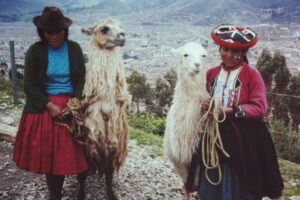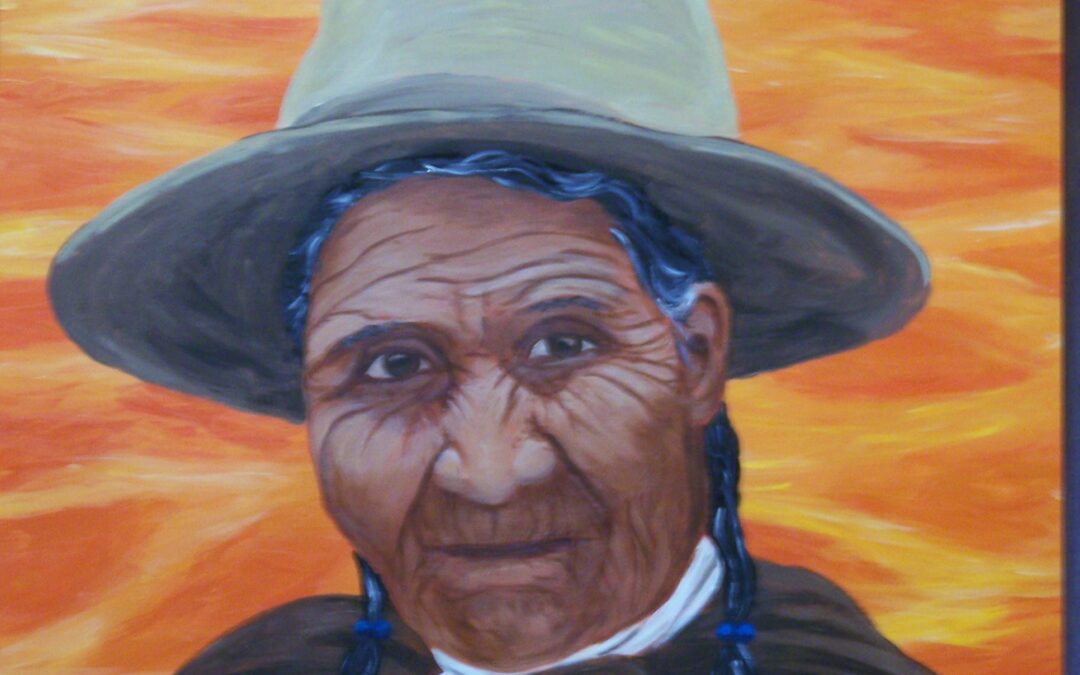“Any man’s death diminishes me, because I am involved in mankind.”
–John Donne, Meditation XVII
A TRANSLATION TRIANGLE
In a small Peruvian city nestled in the Andes, a crowd of Quechua people, proud descendants of the Inca, wait patiently to have their ailments treated. The setting is a far cry from my office in the U.S. Encircled by lofty peaks, it is accessible only by hours of driving on dusty, unreliable roads. The “clinic” is a roofless, cinder-block church, rather than the soaring spire of glass and steel that has become the cathedral of modern healthcare.
The patients are unlike typical Americans, as well. Trudging mountain paths, they wear distinctive, colorful clothing. Their skin is deeply weathered by the merciless elements, and many of their medical infirmities have progressed to later stages than we see in the developed world. They speak mostly Quechua, though some know Spanish. In order to communicate we often go through a triple decker: Quechua to Spanish to English and then back again.
One middle-aged woman appears particularly distressed. The translators inform me that her eye is causing her terrible trouble. Expecting to see redness or a cataract – all too common at this altitude – I nevertheless can discover nothing wrong with her eyes or anything else. Even so, beyond her foreign language and clothing, something feels familiar. Surely something is going on beyond an ocular complaint. What am I missing?
Puzzled, I press the translators for more information. Then, after a delay, my American translator, who is performing the Spanish-English leg of the linguistic triangle, lets out a gasp and looks sheepish.

COMMON GROUND AT 10,000 FEET
In my U. S. medical center, I see people every day from the far reaches of the globe. I have also provided or taught medicine in Africa, South America, Europe, and Asia. What a privilege! These experiences have highlighted the profound ways in which culture and individuality shape human experience. It is naïve, even foolish, to underestimate the gulfs that separate people of disparate backgrounds.
On the other hand it is even more perilous to see only the differences in others. It is remarkable how many things – especially fundamental things – are shared by all people. Take pain, for example – what an equalizer! The young mother in labor in an expressive culture may scream in her travail, whereas the woman from a stoic tradition merely breathes heavily and sweats. That does not change the fact that both feel great anguish (and afterwards, great joy).
Regardless of nationality, the patient with a kidney stone writhes in agony, whereas the one with appendicitis lies still. Choking patients the world over grab their throats in a universal sign of panic. And, of course, wherever we were born, none of us can suppress the impulse to rub our afflicted body part.
Maybe it was the heavy Quechua accent. My embarrassed translator thought she heard the Spanish word ojo (eye), when in fact the word was ijo (son). The distraught lady was having trouble with a wayward child, not a body part! She needed prayer and support – not eye salve.
Deep down, people are the same at 10,000 feet as they are everywhere else! And deeper still is a foundational truth that unites all of us, transcending culture, history, and individual differences.
“God created man in His own image, in the image of God He created him; male and female He created them.”
–Genesis 1:27
This explains why human beings are so precious. We inherently possess value, not because of status or moral goodness (which we all lack!), but because one who is supremely valuable fashioned us in His image.
Our worth derives from God’s worthiness. This tenet reconciles a difficult, but clearly valid, reality. On one hand, without God, we are depraved. At the same time, people are capable of great beauty, generosity, and nobility.
Uncomfortable List
Naturally it is easier to see God’s image when dealing with beautiful, nice people (like us!). But the universal veracity of Genesis 1:27 means that the following groups bear God’s image:
- Murderers
- Those of all races, religions, and political views
- Racists
- Academics and artists
- Homeless people
- Refugees
- Members of the press and media
- Corporate CEOs
- Obnoxious fans of the other team
- Our enemies
- ALL PEOPLE
I suspect that I was able to step on just about everyone’s toes (including my own) with this list.
Learning by Instruction
Sometimes the mark of a holy God is so distorted by our fallen state or disease that it is terribly hard to discern. And the imprint of a holy God upon us does not excuse our sin or remove the reality of evil. Furthermore, my own sinfulness may limit my ability or willingness to see the imprint of God in others. But the Bible admonishes me to treat everyone with respect for the sake of our Creator.
Learning by Example
Scripture can shine by example, as well as decree. I am sure that the Palestine of Jesus’ day had many derogatory labels for undesirable people. One of these undesirables named Matthew, who had the disreputable job of tax-collector, writes of his own first encounter with Jesus in Matthew 9:9:
“As Jesus went on from there, He saw a man called Matthew, sitting in the tax collector’s booth; and He said to him, ‘Follow Me!’ And he got up and followed Him.”
Did you catch the power of that word used to describe Matthew? Jesus saw a man! Not a tax-collector, crook, or scumbag, but a man. Jesus saw an image bearer of His divine nature, an impoverished soul underneath rich externals, a man in need of a savior and restoration to true humanity.
The powerful statement of Genesis and the pointed example of Christ cut me to the quick whenever I am tempted to dismiss another person.
A Poor Substitution
Jesus spoke favorably of “the least” people. Traditionally those in minorities, the homeless, and the poor might be among those regarded as “the least” in our culture. It is heartening that this is starting to reverse. I meet many young people today with an admirable acceptance of marginalized people. But though noble, even that is not enough.
Sometimes we simply create mirror images of distorted views and believe we have clarified things. We commendably embrace those once considered outcast, but then consign another group – the rich, the powerful, the privileged, the other political party, etc. – to the disdained, subhuman category.
We are all tempted to do this. Alas, to dehumanize is human. And the most important person for us to see the image of God in is the one we are most tempted to despise and dismiss. Everyone, like Matthew, like you, like me, should be regarded as a priceless soul which can be redeemed by Jesus. To see in that way requires the power of God. It is also a work of submission and faith on our part.
I think I need to go further.
May God help us to see and respect his image in everyone.
Dr. Bill Maynard
